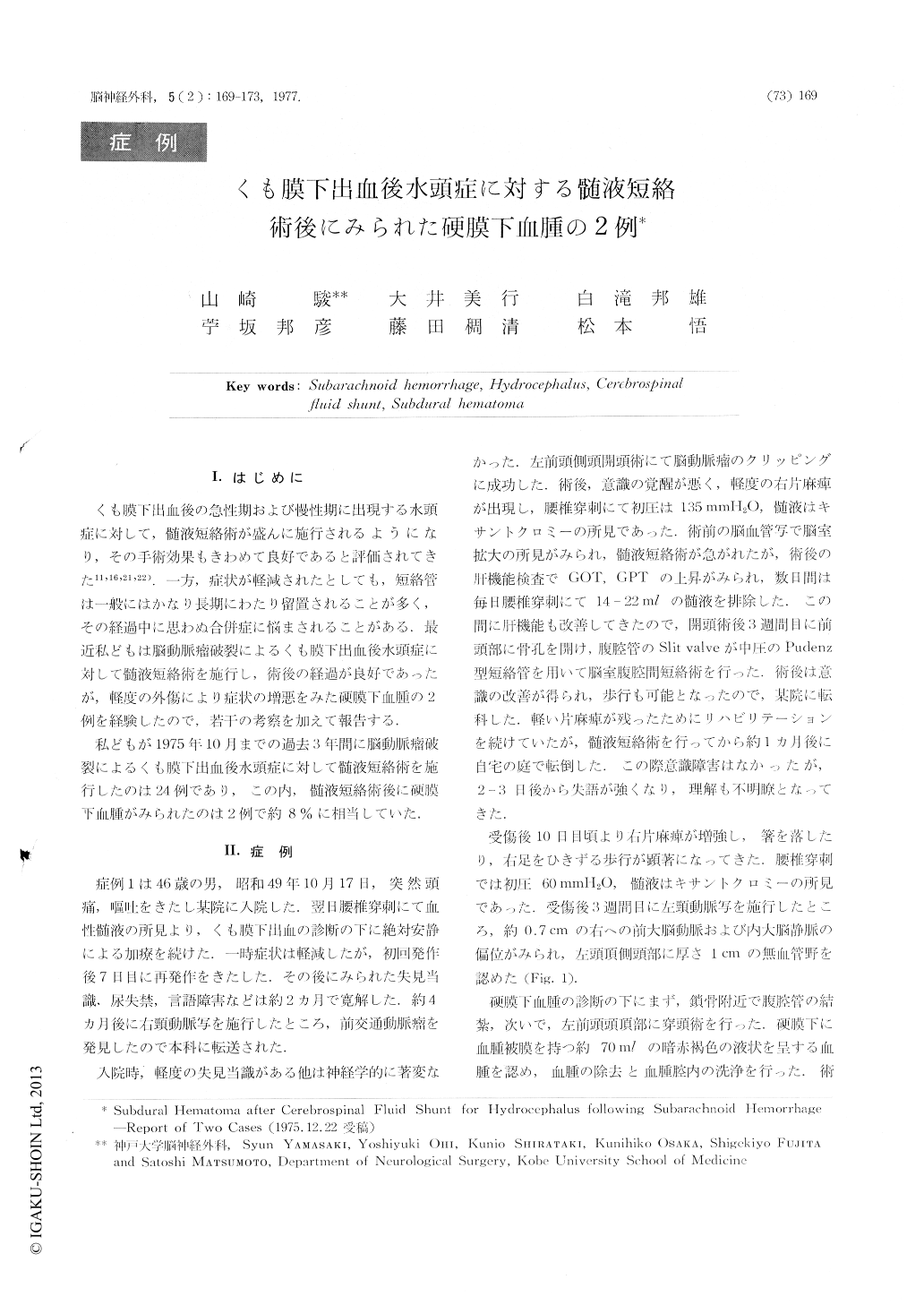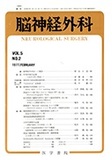Japanese
English
- 有料閲覧
- Abstract 文献概要
- 1ページ目 Look Inside
Ⅰ.はじめに
くも膜下出血後の急性期および慢性期に出現する水頭症に対して,髄液短絡術が盛んに施行されるようになり,その手術効果もきわめて良好であると評価されてきた11,16,21,22).一方,症状が軽減されたとしても,短絡管は一般にはかなり長期にわたり留置されることが多く,その経過中に思わぬ合併症に悩まされることがある.最近私どもは脳動脈瘤破裂によるくも膜下出血後水頭症に対して髄液短絡術を施行し,術後の経過が良好であったが,軽度の外傷により症状の増悪をみた硬膜下血腫の2例を経験したので,若干の考察を加えて報告する.
私どもが1975年10月までの過去3年間に脳動脈瘤破裂によるくも膜下出血後水頭症に対して髄液短絡術を施行したのは24例であり,この内,髄液短絡術後に硬膜下血腫がみられたのは2例で約8%に相当していた.
Post-shunt subdural hematoma was found in two patients with hydrocephalus due to subarachnoid hemorrhage. The first case was a 46-year-old man with two episodes of subarachnoid hemorrhage from anterior communicating aneurysm. Two weeks after neck-clipping for the aneurysm, a ventriculo-peritoneal shunt with Pudenz's system was performed since hydrocephalus with moderately increased pressure had been found. He did well for one month, then soon after mild head injury, disorientation and right hemiparesis developed. Cerebral angiogram revealed avascular space in the left parietotemporal region.

Copyright © 1977, Igaku-Shoin Ltd. All rights reserved.


